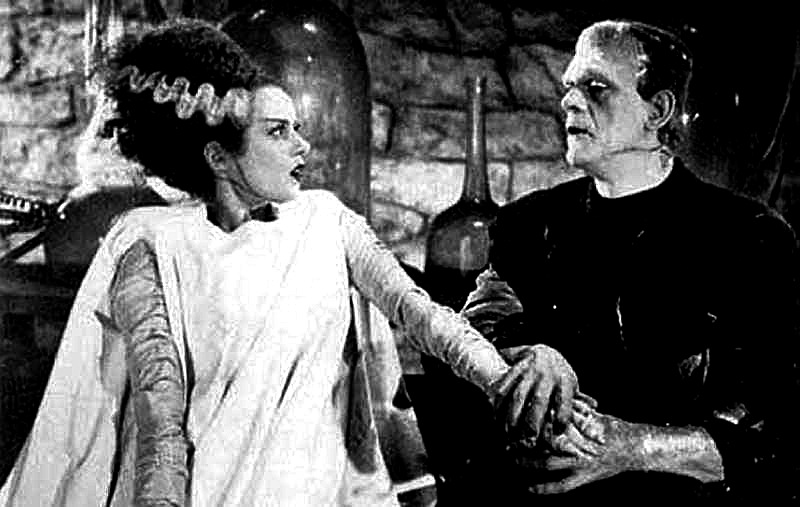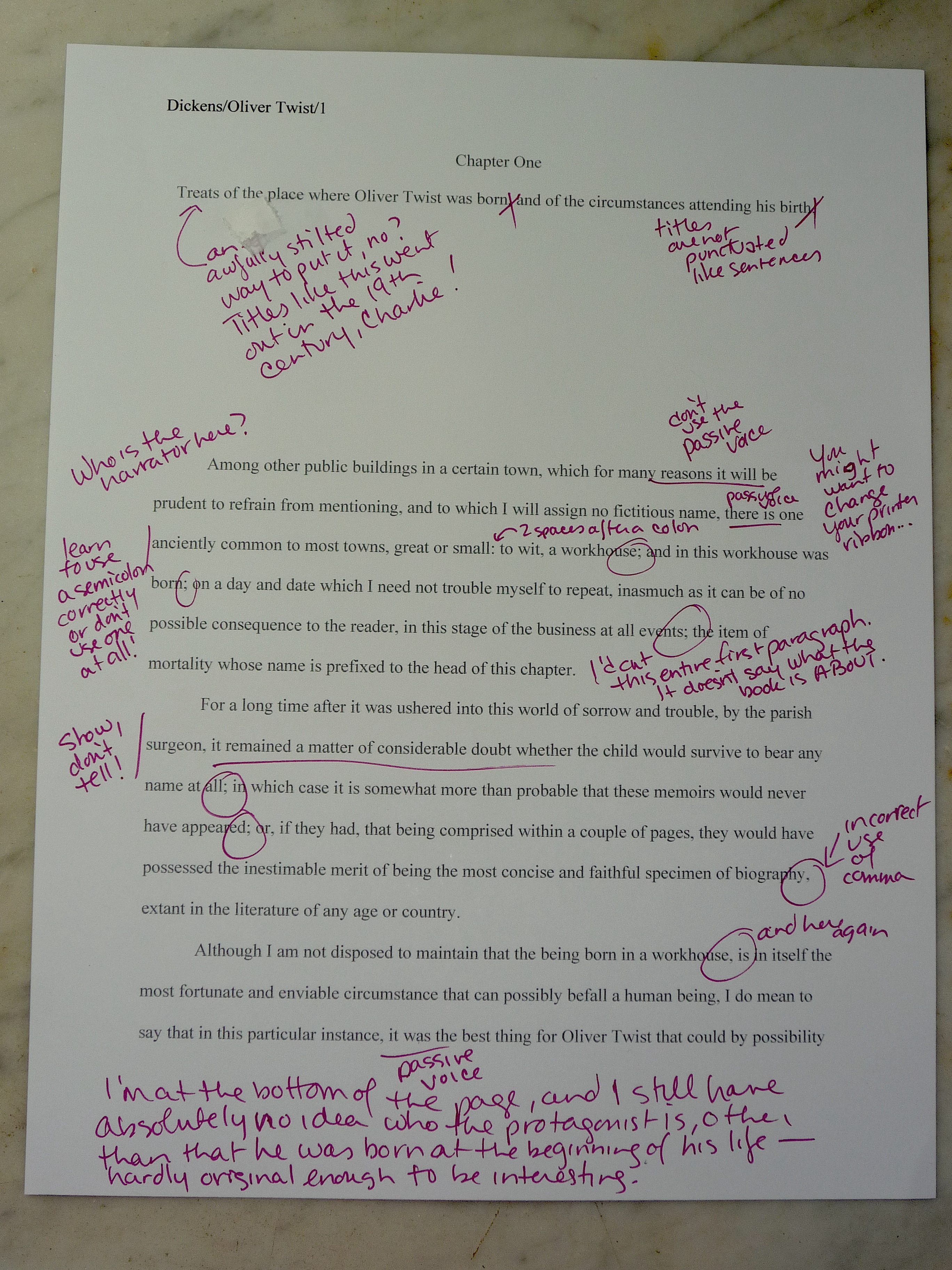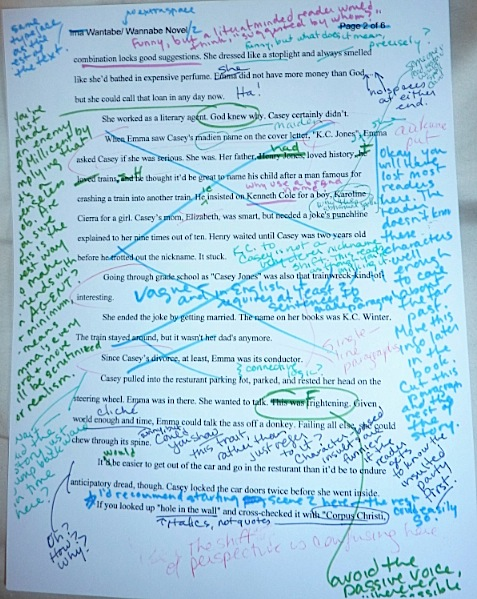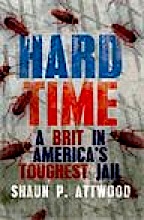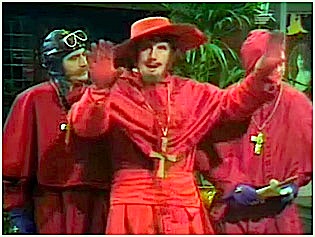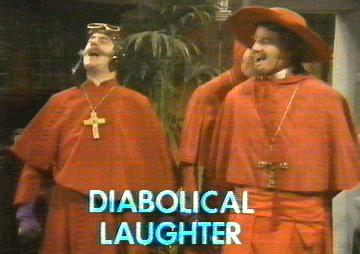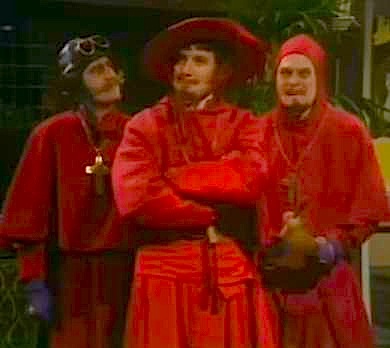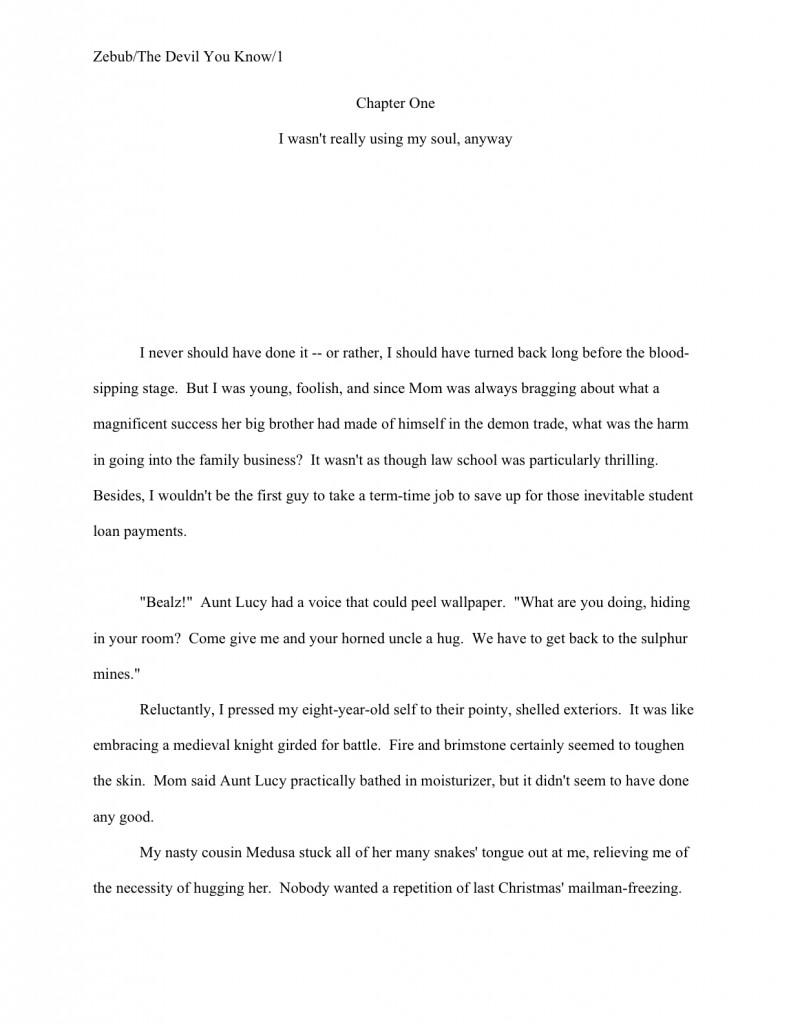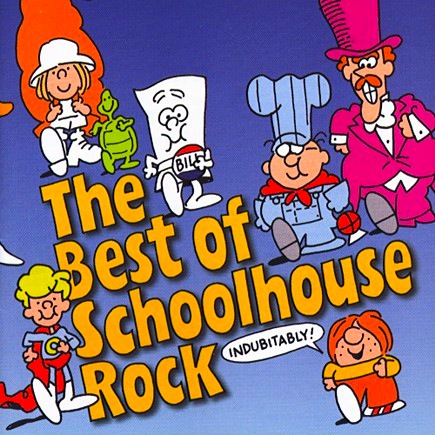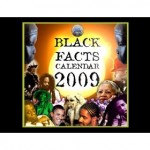
Today, I received one of the saddest pieces of news a person can hear from a writer friend: an excellent author of my acquaintance saw her hard disk crash, doubtless from overwork. Not a syllable could be salvaged.
On a not entirely unrelated note, when was the last time you backed up your writing files? Is it recently enough that you could reconstitute your most recent revisions or new text from your unassisted memory?
If the answer to that second question is no, feel free to stop reading right now and make a back-up. I’m perfectly happy to wait, if it means that we can all sleep better tonight, confident that hours, days, weeks, and/or months of your writing time won’t just vanish in the proverbial puff of smoke.
Or ozone, as the case may be; as undoubtedly conducive to creative expression as computers are, the permanence of the results can be illusory. At times like this, I occasionally find myself longing for my father’s good old Olivetti typewriter — or even a simple Edwardian writing desk, like the one above. (Note, please, the requisite photo of a loved one and apparently equally requisite liquor tray.)
Admittedly, one had to hit the Olivetti’s keys so hard that when I was learning to touch-type in middle school, I couldn’t actually force the q, z, p, or ? keys to hit the ribbon with sufficient force to leave any impression upon paper. But at least to lose a month’s worth of one’s writing, an author actually had to misplace it physically.
(Were you distracted from the pithiness of that last bon mot by a mental image of a blindfolded 6th grader groping for the & key? Don’t be. Actually, my father had argued for my starting typing classes at age 8, so I could work in a few extra years of standard format-wrangling before high school — and that, my friends, is how one grows up to be an editor.)
Writing on a computer boasts at least one monumental advantage over the all hard copy, all the time method, however: it’s possible, and indeed easy, to check whether that wry observation that just occurred to you also occurred to you back when you were composing Chapter 3. And Chapter 7. And possibly Chapter 14.
That’s right, folks: today, we’re going to apply ourselves to that ever-popular birthmark of Frankenstein manuscripts everywhere, the sentence — or paragraph, or footnote, or scene — that turns up more than once in a manuscript. Most of the time, even a careful reviser won’t notice such textual redundancies: a favorite turn of phrase, a trenchant observation on the human condition, an image that strikes a writer as particularly, well, striking.
Hey, if it sounded good in the writer’s mind the first time, what’s to stop it from sounding good the second? Or the fourth? Or the forty-seventh?
Perfectly innocent and understandable, right? Well, perhaps not so much to our old pal Millicent the agency screener — or her cousin Maury, the editorial assistant, or their aunt Mehitabel, the veteran contest judge. To someone who reads manuscripts for a living, such inadvertent redundancy can take on a more sinister aspect: to an uncharitable reader, even a single repetition of a pet phrase can smack of self-plagiarism.
Not to mention that perennial bugbear, insufficient authorial re-reading.
It’s no wonder, then, that when Millicent sees a sentence, image, or observation from page 1 turn up on page 26, Frankenstein manuscript warning bells start chiming wildly in her head. From that point on, her already sharp critical sensors turn downright predatory, eager to swoop down upon more tell-tale signs that this is one of those texts whose author either kept changing his mind about the style he wished to embrace — or tone, or target audience, or book category — or just kept revising it so often that the narrative reads like a patchwork of different prose styles.
That does not mean, however, that self-plagiarism does not turn up quite frequently in non-Frankenstein manuscripts. How can an experienced reviser tell the difference? Where the Frankenstein manuscript varies substantially as pages pass, the self-plagiarized text merely becomes redundant: passing scenery always described the same manner, for instance, or a clever line of dialogue repeated in Chapters 2, 5, and 16.
Nonfiction writing in general, and academic writing in particular, is notoriously prone to redundancy. Once you’ve gotten into the habit of footnoting everything in the least questionable, it’s pretty easy to reuse a footnote, for instance, or to come to rely upon stock definitions instead of writing fresh ones every time.
Or, in a memoir, to tell the same anecdote more than once. As, indeed, people who like to talk about themselves tend to do in conversation. (Did I ever tell you about the time my father wanted me to learn touch-typing as a third grader?)
My point is, most of the time, self-plagiarism is unintentional; a writer simply finds a certain turn of phrase appealing and forgets that she’s used it before. Or just doesn’t notice, despite the fact that great way to catch this sort of redundancy is — wait for it — to read your manuscript IN HARD COPY, IN ITS ENTIRETY, and OUT LOUD, in as few sittings as possible.
Oh, had I suggested that before? Had I in fact mentioned it several times a post throughout this series? How silly of me not to notice.
You may laugh, but actually, it’s quite easy for even a fairly conscientious reviser to miss instances of self-plagiarism on the page, especially if — as most revisers do — she is reading through the manuscript over several days or even weeks. After all, you have to be gifted with an unusually strong memory for phraseology to stop short in the middle of Chapter 15 and shout, “Hey, I’ve seen that image before, and it was on page 36, paragraph four!”
I don’t mean to frighten you (or do I?), but professional readers often do have astonishingly accurate memories of text. Millicent might not be able to tell you precisely where she’s seen that Ch. 15 image before, but she will almost certainly have the dim impression that it has appeared earlier in the manuscript. I can positively guarantee you, though, that if the first instance of its use pops up on p. 36, and the second on p. 42, she will most assuredly spot the second as redundant. She should: professional readers are trained for that.
For a self-editing writer, it can be harder to catch — and harder still to remember if you actually used that sentence elsewhere, or merely thought about it. As inveterate commenter and long-time FAAB (Friend of Author! Author! blog) Dave so rightly pointed out the last time we talked about this phenomenon, most good writers spend quite a bit of time mulling over any given scene in a book, not to mention revising it later on; it’s not uncommon, therefore, to have a positive welter of mental associations about the evolution of pp. 36 and 42, respectively. Add to that the fact that a reader’s eye will tend to pass over smoothly-written text pretty quickly, especially if it’s a scene he’s read before, and reading through one’s own manuscript by definition entails re-reading, and can we really be surprised when self-plagiarism passes unnoticed under the reviser’s gaze?
Even when the repeated phraseology or image does jump out at the re-reading reviser, it won’t necessarily be for a negative reason. It’s not unheard-of for writers actually to prefer repeated bits in their own work: those turns of phrase are his favorites for a reason, presumably. They linger in his ears pleasingly when he reads them out loud; they strike him as some of his best writing on the page.
It was for precisely this kind of writer’s benefit that Dorothy Parker started urging all of us to kill your darlings, one of the most often misinterpreted pieces of common writing advice in the canon. She wasn’t talking about ruthlessly excising every piece of writing you like and leaving the stuff you like less, people: she was suggesting that you consider taking a critical look at even your favorite sentences and paragraphs. All too often, inexperienced self-editors will simply skip over their pet bits.
Kill your darlings (selectively!) is excellent advice for self-plagiarists, though. Perhaps a writer need not sacrifice the first of the litter, but the second through seventeenth should definitely go.
Sometimes, too, self-plagiarism is deliberate. If a line was clever once, many a darling-coddling writer thinks, the reader will find it so the second time — and the fifth, and the forty-seventh. Deliberate redundancy is particularly common with humor: since situation comedies tend to rely upon repetition of catch phrases, many aspiring writers believe — mistakenly, often — that the mere fact of repetition will render a line funny.
On the page, it seldom works. Sorry to be the one to break it to you sitcom lovers, but it quickly becomes tedious on the stage and screen as well.
Don’t believe me? Consider this: nowhere is the practice of self-plagiarism more prevalent than in the garden-variety political speech, right? As anyone who has listened to two consecutive State of the Union addresses can tell you, political speeches often sound the same from year to year. No matter how fiercely THE WEST WING tried to promote the notion of presidential speechwriters as ultra-creative writers, if you look at speeches given by the same politician over time, self-plagiarism is of epidemic proportions.
There’s a good narrative reason for that, of course: the repetition of an idea makes it memorable. The ideas — and usually even the actual phrases — of the beginning of a political speech invariably recur throughout, to drive the point home.
Doubt that? Okay, answer this: do you think people would remember that the Rev. Dr. Martin Luther King, Jr. had a dream if he had said it only ONCE in his famous March on Washington speech?
On paper, phrase repetition is often problematic, but in and of itself, repetition does not necessarily equal self-plagiarism. On paper, phrase repetition can be used for emphasis (as I have just done in this very paragraph, much to Millicent’s chagrin). A lot of good writers choose to repeat phrases within a single paragraph for rhythmic reasons, which can bring a passage a feel of invocation.
We all know how phrase repetition can create a sense of momentum in writing, don’t we? Take, for instance, the ending of the St. Crispin’s Day speech from HENRY V:
If we are mark’d to die, we are enow
To do our country loss; and if to live,
The fewer men, the greater share of honour.
God’s will! I pray thee, wish not one man more.
By Jove, I am not covetous for gold,
Nor care I who doth feed upon my cost;
It yearns me not if men my garments wear;
Such outward things dwell not in my desires.
But if it be a sin to covet honour,
I am the most offending soul alive.
No, faith, my coz, wish not a man from England.
God’s peace! I would not lose so great an honour
As one man more methinks would share from me
For the best hope I have. O, do not wish one more!
Rather proclaim it, Westmoreland, through my host,
That he which hath no stomach to this fight,
Let him depart; his passport shall be made,
And crowns for convoy put into his purse;
We would not die in that man’s company
That fears his fellowship to die with us.
This day is call’d the feast of Crispian.
He that outlives this day, and comes safe home,
Will stand a tip-toe when this day is nam’d,
And rouse him at the name of Crispian.
He that shall live this day, and see old age,
Will yearly on the vigil feast his neighbours,
And say ‘To-morrow is Saint Crispian.’
Then will he strip his sleeve and show his scars,
And say ‘These wounds I had on Crispian’s day.’
Old men forget; yet all shall be forgot,
But he’ll remember, with advantages,
What feats he did that day. Then shall our names,
Familiar in his mouth as household words-
Harry the King, Bedford and Exeter,
Warwick and Talbot, Salisbury and Gloucester-
Be in their flowing cups freshly rememb’red.
This story shall the good man teach his son;
And Crispin Crispian shall ne’er go by,
From this day to the ending of the world,
But we in it shall be remembered-
We few, we happy few, we band of brothers;
For he to-day that sheds his blood with me
Shall be my brother; be he ne’er so vile,
This day shall gentle his condition;
And gentlemen in England now-a-bed
Shall think themselves accurs’d they were not here,
And hold their manhoods cheap whiles any speaks
That fought with us upon Saint Crispin’s day.
Now THAT’s a political speech: great when spoken out loud, but Millicent-enragingly repetitious in print.
Did that last observation catch you by surprise? Unfortunately, a lot of poor writers favor this rhythmic device, too, so it tends to be a rather risky trick to try to pull off in a short piece, such as a synopsis, or even in the first few pages of a manuscript submitted for a contest or as part of a query packet.
Think about it: to professional eyes, trained to search for the repetition of a single verb within a paragraph as evidence of boring writing, we few, we happy few will not necessarily jump off the page for the beauty of its rhythm. In an ultra-quick reading (as virtually all professional readings are, lest we forget), it may be mistaken for an incomplete edit: you meant to change we few to we happy few,” but you forgot to delete the words you did not want.
Let’s see if you’ve been paying attention for the last few days: why would a savvy submitter not want to convey the impression of an incomplete editing job? That’s right: because that’s the birthmark of the dreaded Frankenstein manuscript, the fish that Millicent is only too happy to throw back into the sea.
Remember, too, that it may not take many instances of repetition for Millicent to draw this conclusion. The writer may not realize that she has reused a particularly spectacular image from Ch. 1 in Ch. 3, but believe me, if there is repetition, professional readers will catch it. The pros are trained to catch redundancy; editors are notorious for remembering entire pages verbatim.
I am no exception: when I was teaching at the University of Washington, I was known for noticing when term papers resubmitted in subsequent quarters, even though I read literally hundreds of papers per term. I would even remember who wrote the original. As you may well imagine, I quickly acquired a reputation amongst the fraternities and sororities who kept files of A term papers for their members to, ahem, borrow.
Which reminds me pass along another revision tip: paraphrasing what you’ve said earlier in the manuscript tends to be significantly less frowned-upon than outright literal repetition. That’s why, in case you were wondering, while very similar passages may earn you an ill-humored rebuke from a professional reader, generalized repetition usually will not knock you out of consideration if the self-plagiarized bits occur far apart, such as at the beginning and end of a book.
However, in a shorter piece — such as, say, those first 50 pages of your novel that nice agent asked you to send for consideration — it certainly can cost you. Repetition sticks in the professional reader’s craw, nagging at her psyche like a pebble in a shoe. It’s in your best interest to do it as little as possible.
“Now wait a minute,” I hear some of you out there grumbling. “Oscar Wilde repeated the same quips in one play after another. It became his trademark, in fact. So why should I be punished for using a single particularly sterling line 150 pages apart in my novel?”
You have a point, of course, oh grumblers. You might also have bolstered your argument by mentioning that Aaron Sorkin reused not only lines and speeches from SPORTS NIGHTin THE WEST WING, but entire plot lines and basic characters.
Tell you what: after you make it big, I give you permission to establish a trademark phrase and use it as often as you like. Until you do — as I sincerely hope you will — all I can do is tell you what tends to annoy agents, editors, and contest judges.
That being said, it must be admitted that all writers of book-length works have repeated themselves at one time or another. If a simile struck us as the height of cleverness last week, chances are good that we will like it next week as well. Each time we use it, it may seem fresh to us.
These little forays into self-indulgence are so common, in fact, that literary critics have a name for them: tropes.
F. Scott Fitzgerald was a notorious troper in his short stories. A thwarted heroine’s sobbing out (usually with her face hidden by her smartly bobbed hair), “I’m so beautiful – why can’t I be happy?” immediately before she does something self-immolatingly stupid to remove herself from the possibility of marrying the story’s protagonist occurs at least four times throughout his collected works. (It may pop up more; I stopped counting after four.)
Why our Scott found that particular line so very attractive in a pretty woman’s mouth remains a mystery eternal — it’s hard to believe he ever actually heard a sane female utter it, even in jest. But he did, evidently, and now it’s stuck to his name for all eternity.
Learn from his unhappy fate, I beg of you: no matter how marvelous a line is, use it only once.
This will require careful reading to enforce. Your garden-variety self-plagiarism is less obvious to the untrained eye than ol’ Scott’s outright line reuse. Spread out over an entire text — or as it often appears in the case of successful writers of series, once per book — it may be fairly innocuous, the kind of thing that might only bug someone who read manuscripts for a living.
Like, say, Millicent or yours truly.
For example, E.F. Benson, author of two delightful series, the Lucia books and the Dodo books, was evidently extraordinarily fond of using Arctic analogies for one person suddenly grown cold to another. To gather but a small nosegay of examples:
“It was as if an iceberg had spoken,”
“It was as if the North Pole had spoken,”
“icebergs passing in the North Sea” must speak to one another as two characters had, and
“Mapp turned to ice.”
It’s not a bad analogy, of course, if not a startlingly original one, but like any other literary device, each time it’s used, it becomes less effective.
See the problem? As a Benson enthusiast, I was able to come up with four of them without even pulling any of his books off the shelf. These repetitions, deliberate or not, stick with the reader, just as surely as repeated phrases stick with the audience of a political speech.
Yet again, here is an awfully good reason to read your entire book (or requested chapters, or contest submission) out loud before you submit it — and not just as a cursory mumble-through, either. Believe it or not, just as dialogue that seemed fine on the page can suddenly seem stilted when spoken aloud, phrases, sentences, and images that your eye might not catch as repetitious are often quite obvious to the ear.
Another good reason to read aloud: to make sure that each of your major characters speaks in a different cadence. It’s substantially easier for the reader to follow who is speaking when that way.
Don’t stand there and tell me that all of Aaron Sorkin’s and David Mamet’s characters speak in identical cadences, as though they all shared one vast collective mind. To my sorrow, I am already well aware of that fact: to my sensitive antennae, nothing is more potentially migraine-inducing than an evening of the percussive prose of Mamet. (Unless it’s a chamber concert of Stephen Sondheim.) As if annoying yours truly were not sufficient incentive to eschew identical dialogue patterns for every character, remember what I said earlier this week about the dangers of those new to the biz assuming that what the already-established have done, they may get away with as well?
Uh-huh. In a first-time author, it would be considered poor craft to have every character in the book sound the same. Not to mention poor character development. While I’m on the subject, keep an ear out in your read-through for lines of dialogue that cannot be said aloud in a single breath without passing out — they tend to pull professional readers out of the story.
Why, you shout breathlessly? Well, in real life, listeners tend to interrupt speakers when the latter pause for breath, so cramming too many syllables into an uninterrupted speech usually doesn’t ring true on the page. Allow your characters to breathe occasionally, and your dialogue will seem more realistic.
Oh, bother: I meant to post a shorter blog today, and here I have gone long again. Which begs the question: I’m so beautiful — why can’t I be happy?
There, now at least one real, live human female has said it; don’t say I never did anything for you, Scott. Keep up the good work!


